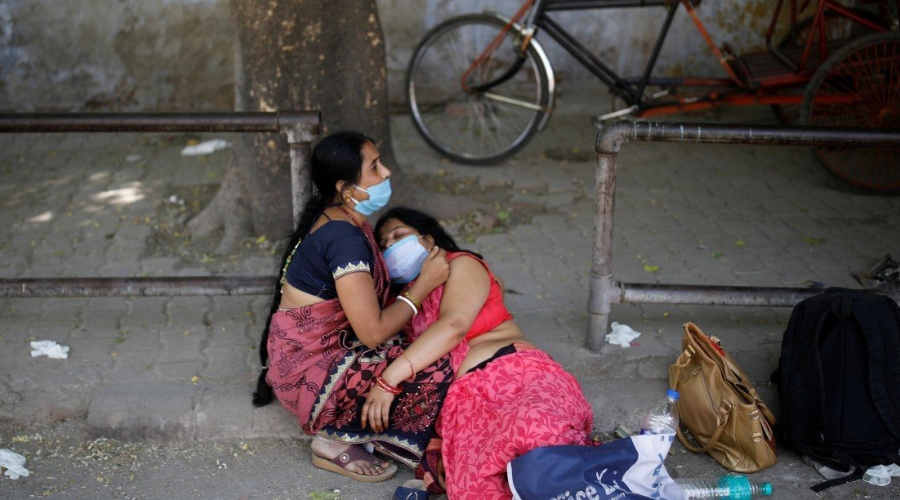The COVID-19 pandemic has dramatically disrupted India’s economy, affecting nearly every sector. In this guide, we delve into the key factors that have contributed to this downturn and examine the strategies being implemented to foster recovery. This analysis is drawn from in-depth insights provided by https://finanzasdomesticas.com/economia-de-india-afectada/ Domesticas.
Overview of the Economic Impact
The Second Wave of COVID-19
Health Crisis and Economic Fallout
India’s second wave of COVID-19 intensified the ongoing health crisis, leading to severe economic challenges. With a sharp increase in cases, many states have implemented restrictions that have stifled economic activity and disrupted daily life.
Decline in Economic Indicators
Vital economic indicators, such as the Nomura India Business Resumption Index, have shown a concerning decline, signaling a slowdown in business operations. The index fell to 83.8 in April 2021, a level not seen since October 2020, underscoring the significant impact of the pandemic on India’s economy.
Sectoral Impact
Railway and Road Transport
The pandemic has taken a toll on industrial activity, as evidenced by an 11% month-on-month decrease in the volume of goods transported by rail in April. This decline highlights reduced demand and a slowdown in industrial output.
Mobility and Curfews
Lockdowns and curfews in major cities have drastically curtailed mobility, as indicated by the Apple Driving Index. The reduced movement has had a ripple effect, hitting the retail, hospitality, and service sectors particularly hard.
Rising Unemployment
The unemployment rate has surged to 8.40% in April 2021, up from 6.9% in February. Urban areas have been hit even harder, with unemployment rates exceeding 10%, reflecting the pandemic’s severe impact on jobs and livelihoods.
Government Response
Economic Measures
Avoiding a National Lockdown
Despite the severity of the second wave, the Indian government has opted against a nationwide lockdown. Instead, it has implemented localized restrictions in an effort to balance public health concerns with economic stability. This approach aims to minimize the economic damage while controlling the virus’s spread.
Supporting the Economy
To mitigate the economic fallout, the government is expected to increase support measures, including https://finanzasdomesticas.com/economia-de-india-afectada aid and incentives. These measures are essential to provide relief to affected sectors and foster economic resilience.
Inflation and Policy Challenges
Supply Chain Disruptions
The ongoing restrictions, coupled with rising commodity prices, are expected to drive inflation higher, complicating the efforts of the Monetary Policy Committee. Disruptions in supply chains have led to increased costs for goods and services, adding to inflationary pressures.
Fiscal Pressures
With reduced economic growth and increased borrowing needs, the government’s https://finanzasdomesticas.com/economia-de-india-afectada are under strain, potentially leading to higher bond yields. Managing these fiscal pressures will require a careful balancing act between providing economic support and maintaining sustainable fiscal policies.
Future Outlook
Vaccination Drive
Accelerating Vaccinations
The road to economic recovery hinges on the acceleration of the vaccination drive. Widespread immunization is crucial for curbing the virus’s spread, restoring consumer confidence, and enabling the economy to reopen safely.
Long-Term Recovery
India’s long-term economic recovery will depend on its ability to manage the pandemic effectively, support key sectors, and adapt to new global economic challenges. Coordinated policy measures and continued support for the hardest-hit sectors will be vital in navigating the path to recovery.
Conclusion
The second wave of COVID-19 has posed significant challenges to India’s economy, affecting multiple sectors. Understanding the underlying factors and the recovery measures in place is essential for navigating these difficult times. By focusing on vaccination efforts and supportive policies, we believe India can overcome these challenges and set the stage for a robust economic recovery. For more detailed insights and updates, be sure to visit https://finanzasdomesticas.com/economia-de-india-afectada Domesticas.
FAQs
How has COVID-19 affected India’s economy?
COVID-19 has led to substantial economic disruption, including a slowdown in industrial activity, a rise in unemployment, and reduced consumer mobility.
What measures is the Indian government taking?
The government has avoided a nationwide lockdown, opting for localized restrictions instead. It is also expected to increase financial support to alleviate the economic impacts.
What is the outlook for India’s economic recovery?
India’s economic recovery will depend on the pace of the vaccination drive, efforts to manage inflation, and the support provided to affected sectors through policy measures and financial aid.
Explore cutting-edge technology insights and trends at Kongotech.pro.



